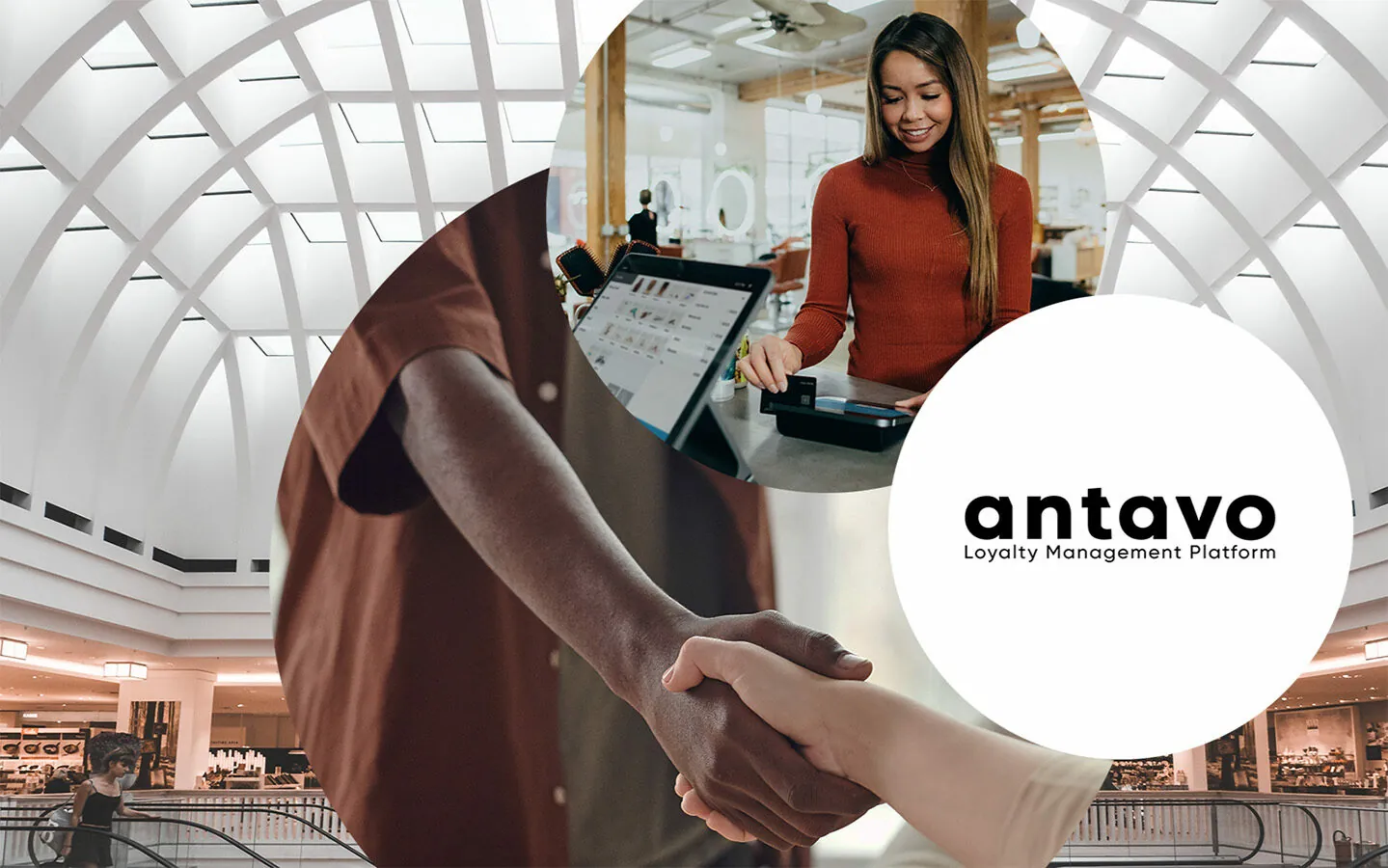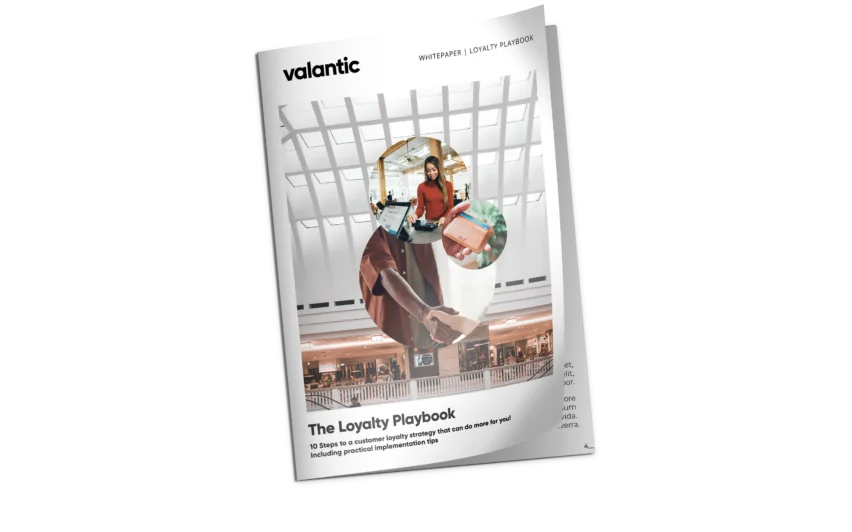Highlight

Successful together – our valantic Team.
Meet the people who bring passion and accountability to driving success at valantic.
Get to know usOctober 5, 2023

In today’s business world, customer loyalty is a hotly debated topic. Many companies actively use loyalty programs to retain customers over the long term. But in the face of competition, it is crucial to actively and sustainably engage customers in loyalty programs over the long term. The question therefore arises: What will be the success of loyalty programs in 2023 and what are the characteristics of successful loyalty programs?
To get a better insight into the topic, we interviewed a real expert in loyalty: Zsuzsa Kecsmar. She is the Chief Strategy Officer and co-founder of Antavo and has more than 10 years of experience in this field. Antavo is a SaaS provider of loyalty technology for businesses, developing comprehensive loyalty programs to drive brand love and change customer behavior.

Good question. At Antavo, we have been in the loyalty business for several years. We founded Antavo in 2012, and we have been working in the loyalty industry since 2016. Our platform is used by many companies such as KFC, BMW, pharmaceutical companies, airport operators and fashion companies.
Many of the loyalty programs on the market used to be, and still are, just “earn & burn.” Customers spend money and receive points in return, which they can in turn exchange for discounts on their next purchase. It’s a model that’s been around for decades. However, today’s loyalty programs could be much better and more diverse due to the great technological changes we have gone through. And that’s exactly what Antavo enables:
Incorporating rewards for friend recommendations, product reviews, gamification or incentives for a certain lifestyle. Today, you can connect with customers on a lifestyle level – with them as a person, not just with them as customers. And that’s what describes the future of loyalty programs: moving away from the traditional “money for points” to a whole new kind of relationship with the customer.
We have just talked about “Earn & Burn”. “Earn & Burn” is a model to describe what a loyalty program actually is. It’s about earning privileges, benefits and rewards through actions (“Earn”) and then redeeming them (“Burn”). These are the two sides of a customer loyalty program. It is very important for the success of a customer loyalty program that these two sides are balanced and that they absolutely go beyond purely transactional or monetary activities.
There are many ways beyond coupons to engage customers on the “burn” side. Experience rewards, exclusive events, early product access – all of these go beyond “the usual”. Exclusivity, scarcity, secrecy or unlimited access are great strategies to make a loyalty program more attractive. However, there is no one recipe for success for such programs, as every company has different customers and follows different strategies.
I think what is special – and this is something that brings us closest to success – is when you can connect with your customers on the basis of shared values, on a personal level. An example from Germany: Bergzeit, a company for mountain sports equipment. The company rewards customers who go hiking, for example. This is about the shared lifestyle that the company embodies and promotes and that your customers want. So it’s not just about selling products, it’s about the shared lifestyle you want to share.
So these types of loyalty programs can make a real difference. They are not just a “standard” customer loyalty program, but can become a unique feature for their company.
There are two features that I think are great that we’ve seen emerge more and more in recent years.
1. CSR integration: Incorporating environmental and social responsibility (Corporate Social Responsibility − CSR) activities into customer loyalty programs allows marketing teams to leverage appropriate additional corporate budgets. Programs related to charity, healthy lifestyle or linked to recycling support these concerns.
2. Partnership rewards: Members who actively participate in partnership offers spend on average three times as much. These are rewards that are not directly part of a company’s core offering, but are provided by a partner company to complement the offering. This type of reward helps to identify and retain valuable customers.
One example is the e-commerce company LouisaviaRoma, one of our customers in the luxury fashion sector. In addition to its wide selection of luxury fashion, the company offers rewards from partners such as luxury trips, visits to gourmet restaurants, and exclusive events. Companies that offer such exquisite rewards also benefit from the opportunity to target LouisaviaRoma customers. This cooperation is beneficial for everyone: LouisaviaRoma strengthens its own customer loyalty, customers receive exclusive benefits, and partner companies profit from the cooperation.
I think the biggest challenge in launching loyalty programs is the implementation phase. There are several players involved: the customer (brand or retailer), possibly strategy agencies, integrators, implementation agencies, and technology providers like Antavo. In the long run, the interaction can work smoothly.
But here’s the challenge: Often, different stakeholders in a company have different ideas about what customer engagement means. So it’s hugely important that everyone develops a common understanding of the concept of customer loyalty. This is where collaboration with companies like valantic comes into play. They have the knowledge and expertise to develop and successfully implement loyalty programs. As experts, they can help brands, retailers and other companies that want to introduce such programs to find the right approach and take all relevant aspects into account. This helps to ensure that all stakeholders, including those within the company, have the necessary understanding. This aspect is particularly crucial when implementing technologies. You can only implement a technology effectively if you know what you want to achieve with a customer loyalty program and how you want it to work. Therefore, implementation is usually the biggest challenge. So it’s worth investing time in clarifying the goals of the customer loyalty program.
According to Gartner, one in three companies that do not yet have an active loyalty program will introduce one by 2027. This will lead to increased competition as the trend gains momentum. Previously, the focus was often on customer acquisition; however, especially since the outbreak of COVID-19, companies are increasingly trying to retain their existing customers in the long term.
The global economic recession further reinforces this approach. The general tendency is therefore to focus on retaining the customers already acquired.
This underscores the importance of standing out from the competition. A comprehensive customer loyalty program that goes beyond “earn and burn” becomes critical to retain customers and differentiate from other companies.
These are all reasons why companies are increasingly approaching us and saying, “We want to introduce a loyalty program to strengthen our customer ties.” Balancing the loyalty strategy with the right technology is essential. The right technology is critical to meet all program requirements. In this regard, flexibility is essential. One should not rely on customized solutions, but rather on a solution that is already up to date and brings all the desired functions.

Whitepaper: “The Loyalty Playbook”
Learn more about customer loyalty and how you can develop a successful customer loyalty strategy in 10 steps. In our whitepaper “The Loyalty Playbook: 10 steps to a customer loyalty…
Don't miss a thing.
Subscribe to our latest blog articles.